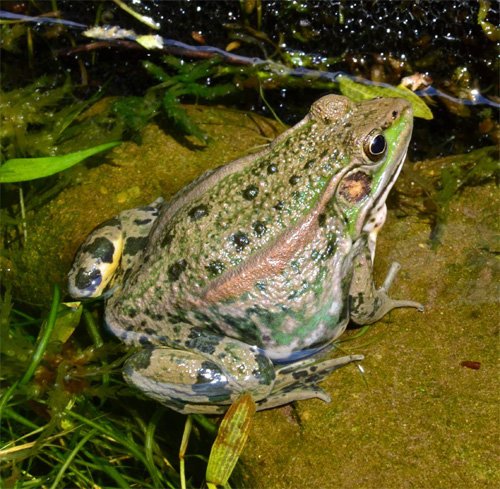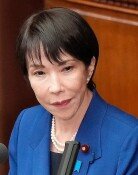Endangered golden frog successfully increases in numbers
Endangered golden frog successfully increases in numbers
Posted August. 19, 2019 08:39,
Updated August. 19, 2019 08:39

Categorized in the endangered category II species, the Korean golden frog has increased greatly in population. The South Korean Ministry of Environment announced on Sunday to return 600 Korean golden frogs to the Aquatic Botanical Garden at the National Institute of Ecology in Seocheon County, South Chungcheong Province. The frogs in question were hatched last September by 20 frogs captured in Asan City, South Chungcheong Province.
The Korean golden frog is characterized by two golden lines on the back. Usually living in rice paddies and agricultural waterways, they have decreased rapidly in population as concrete waterways were widely built around and fertilizers and chemicals became common in use. As the Korean golden frogs only move a short distance and live within a narrow range, they fail to find another habitat once theirs is damaged.
It has been illegal to capture and distribute the Korean golden frog since 1998 when it was classified as a protected species by law by the Ministry of Environment. According to a comprehensive plan to conserve wildlife at risk of extinction issued last year, the ministry plans to restore populations of 25 species including the Korean golden frog by 2027.
Before the National Institute of Ecology was established in 2009, the site was a habitat of the Korean golden frog. Added to this, the aquatic botanical garden provides an abundant amount of prey including small insects. Starting from Monday, the ministry returns every 200 frogs with an interval of a week. The National Institute of Ecology keeps track of the frogs for three years to come so that it can set standards for their habitats and utilize data in other restoration projects in other regions.
kej09@donga.com




![[단독]건보 가입자 40% 차지하는 2040세대, 병원 年 4회도 안 간다](https://dimg.donga.com/c/138/175/90/1/wps/NEWS/IMAGE/2025/12/21/133008933.1.jpg)


